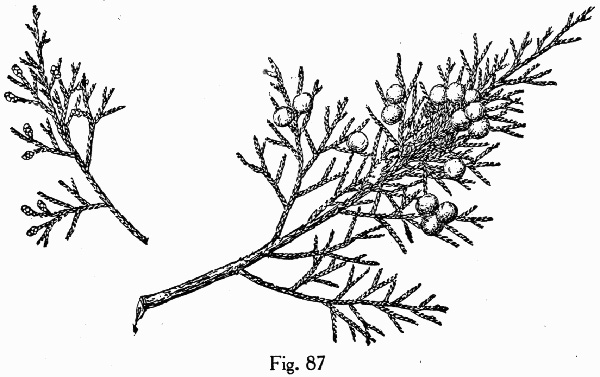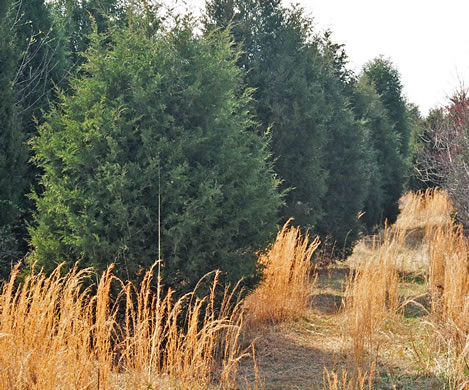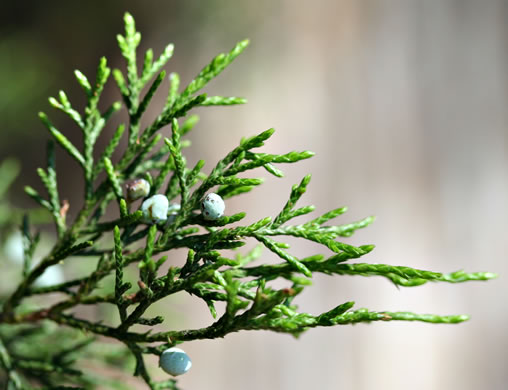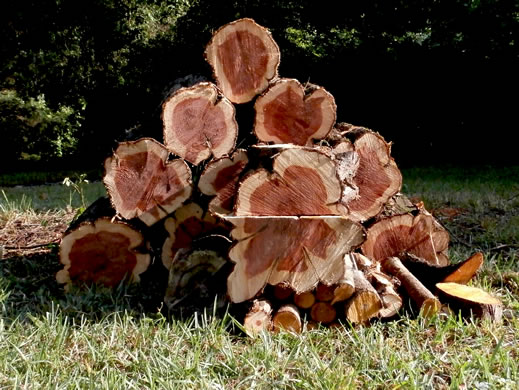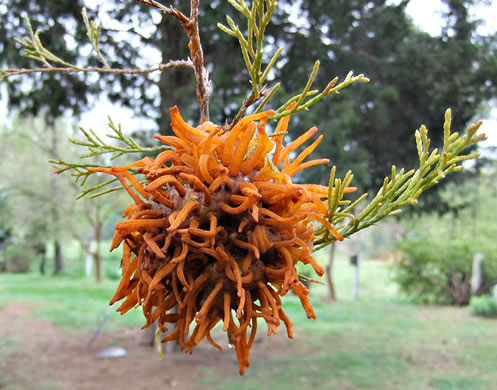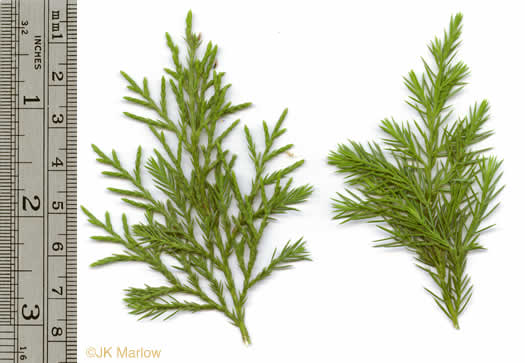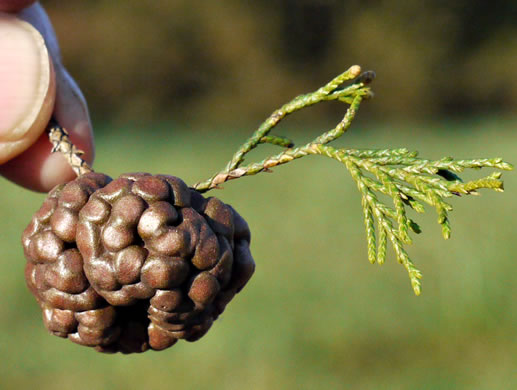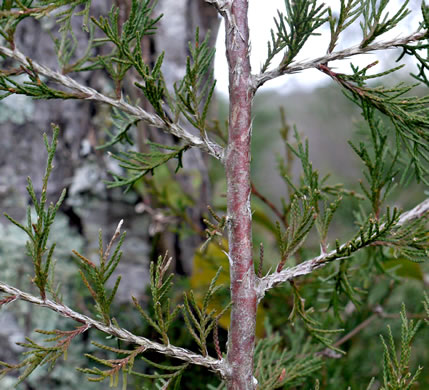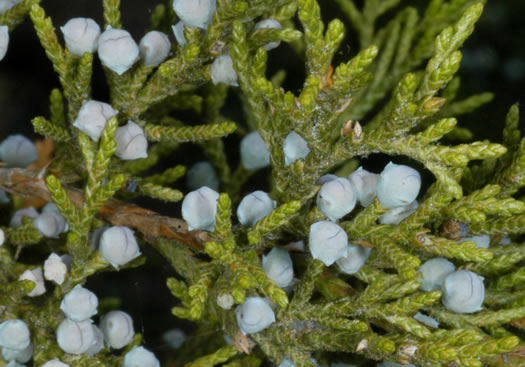Spermatophytes (seed plants): Gymnosperms (non-flowering plants): Conifers: Cupressales
WEAKLEY'S FLORA OF THE SOUTHEASTERN US (4/24/22):
Juniperus virginiana
FAMILY
Cupressaceae
Go to FSUS key
Dig deeper at SERNEC, a consortium of southeastern herbaria.
You may also want to check Trees, Shrubs, and Woody Vines of North Carolina
Learn more about Eastern Red Cedar from the Vascular Plants of North Carolina.
SYNONYMOUS WITH
PLANTS NATIONAL DATABASE:
Juniperus virginiana var. virginiana
FAMILY
Cupressaceae
SYNONYMOUS WITH Flora of North America
Juniperus virginiana var. virginiana
INCLUDED WITHIN Guide to the Vascular Plants of Florida (Wunderlin & Hansen, 2011)
Juniperus virginiana
SYNONYMOUS WITH VASCULAR FLORA OF THE CAROLINAS (Radford, Ahles, & Bell, 1968) 018-03-002:
Juniperus virginiana FAMILY Cupressaceae
SYNONYMOUS WITH Manual of the Southeastern Flora (Small, 1933, 1938)
Sabina virginiana
COMMON NAME:
Eastern Red Cedar
To see larger pictures, click or hover over the thumbnails.
JK Marlow jkm230228_1309
February Pickens County SC
Glassy Mountain Heritage Preserve
Gymnosporangium rusts infect both junipers (esp. red cedar) and woody plants in the rose family, per Plant Disease Diagnostics Clinic @ University of Wisconsin-Madison.
Richard and Teresa Ware rtw_j_virginiana_2
February
Crown usually dense and conical, widening with age but rarely flattening, per Woody Plants of the Southeastern US: A Winter Guide (Lance, 2004).
Gill Newberry gn03_j_virginiana_male
March
Pollen cones about 1/8" long, terminal, numerous, per Native Trees of the Southeast, An Identification Guide (Kirkman, Brown, & Leopold, 2007).
JK Marlow jkm0403p_23
March Greenville County SC
Bunched Arrowhead Heritage Preserve
Most abundant on circumneutral soils from mafic or calcareous rocks, per Weakley's Flora.
JK Marlow jkm160512_002
May Greenville County SC
The durable red wood used for posts, railroad ties, cedar chests and pencils, per Trees Worth Knowing (Rogers, 1924).
Sam Pratt sbp_1698
May Spartanburg County SC
In cultivation
The cedar phase of the Apple Cedar Rust parasite, Gymnosporangium spp., in May.
JK Marlow s060617_j
June Greenville County SC
Leaves on juvenile shoots sharply tipped and subulate, per Woody Plants of the Southeastern US: A Winter Guide (Lance, 2004).
Richard and Teresa Ware rtw_juniperus_virginiana
July
Bark is shreddy, fibrous, per Woody Plants of the Southeastern US: A Winter Guide (Lance, 2004).
JK Marlow jkm131020_943
October Spartanburg County SC
Over-winter phase of Apple Cedar Rust parasite, Gymnosporangium spp., in October
JK Marlow jkm151227_055
December Pickens County SC
Leaves appressed and scalelike (acicular) on mature twigs, per Woody Plants of the Southeastern US: A Winter Guide (Lance, 2004).
Patrick D. McMillan pdmjvirginiana_farb
Month Unknown Lancaster County SC
Forty Acre Rock Heritage Preserve
Mature seed cones ~ 1/4", berry-like, greenish-blue with whitish coating, per Native Trees of the Southeast, An Identification Guide (Kirkman, Brown, & Leopold, 2007).
![]() COMPARE
conifers (not including Pines)
COMPARE
conifers (not including Pines)
WEAKLEY'S FLORA OF THE SOUTHEASTERN US (4/24/22):
Juniperus virginiana
FAMILY
Cupressaceae
SYNONYMOUS WITH
PLANTS NATIONAL DATABASE:
Juniperus virginiana var. virginiana
FAMILY
Cupressaceae
SYNONYMOUS WITH
Flora of North America
Juniperus virginiana var. virginiana
INCLUDED WITHIN
Guide to the Vascular Plants of Florida (Wunderlin & Hansen, 2011)
Juniperus virginiana
SYNONYMOUS WITH
VASCULAR FLORA OF THE CAROLINAS (Radford, Ahles, & Bell, 1968) 018-03-002:
Juniperus virginiana
FAMILY
Cupressaceae
SYNONYMOUS WITH
Manual of the Southeastern Flora (Small, 1933, 1938)
Sabina virginiana
If a search such as "Carex leptalea var. leptalea" doesn't deliver the results you want, try "Carex leptalea".
Or, to minimize chances of a misspelling, try just "Carex le".
Less is more: If "pencil flower" doesn't deliver the results you want, try "pencil".


